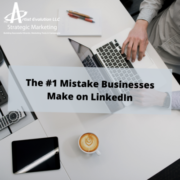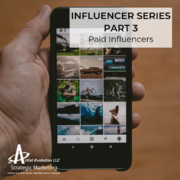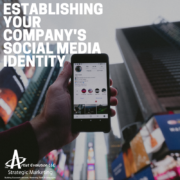The #1 Mistake Businesses Make on LinkedIn
Businesses love LinkedIn.
Unlike traditional social media platforms, LinkedIn welcomes businesses with open arms. The “platform for professional networking” forgoes algorithms designed to hide businesses’ posts, and it does not force businesses to pull out their wallets if they want to reach their hard-earned followers (yes, we’re looking at you Facebook).
It comes at no surprise, then, that over 30 million businesses use LinkedIn as part of their marketing strategy. It is, quite frankly, much easier to find one’s niche as a business on LinkedIn than on any other social media platform, just as it is much easier for an influencer to find their niche on, say, Instagram.
Ironically, though, it is LinkedIn’s welcoming attitude toward businesses that often holds businesses back.
The number one mistake businesses make on LinkedIn is taking the platform’s business-first approach for granted.
LinkedIn is welcoming to businesses, but to treat it like the classified section of a newspaper, as so many businesses do, is to do the platform–and your marketing strategy–a great injustice.
With a platform like Facebook, businesses have to be creative with their messaging so as not to come across too strong, too blatantly self-promotional. When they get to LinkedIn, however, they often become lazier with their messaging, just as an employee speaks much more casually to a friend than they do to a potential new client.
But just because you can be more blatantly self-promotional on LinkedIn and get away with it does not mean it is in the best interest of your business to do so.
Promoting one’s own business on LinkedIn, and other social media platforms for that matter, does have its place, but it should be used scarcely and at strategic points in the trajectory of your marketing campaign–it should not be the primary style of posting.
Just as it is important to think creatively about how you position yourself to consumers on Facebook, so it is important to think creatively about how you position yourself to other businesses, even if you have a B2C model (and especially if you have a B2B model).
In order to get the most out of your company’s LinkedIn presence, it helps to refer to what LinkedIn thinks of itself. According to LinkedIn’s website, their mission is to “connect the world’s professionals to make them more productive and successful”—more productive and successful.
These are the two primary aims of LinkedIn. Their news feed algorithm, then, is designed to fulfill these aims, and building your LinkedIn strategy accordingly would be wise.
To determine if your business’s LinkedIn content is optimal, ask yourself this simple question: Do the majority of my posts help other LinkedIn users become more productive and/or successful?
If the answer is no, then you may need to re-evaluate your content strategy.
The good news, though, is that if you answered no, the ceiling of your business’s LinkedIn marketing strategy just got much, much higher.
The other good news: You don’t have to write industry-related articles worthy of the New York Times to provide value to LinkedIn users (though it wouldn’t hurt). All you have to do is aim to provide users with some sort of value, however small, each time you post.
And in case it needs mentioning, no, blatantly advertising your product or service—though they may in fact be of value to users—is not what we mean.
The value you provide needs to come independent of your product or service.
That way, you can build a relationship with users before asking them for their hard-earned money (best case scenario, you don’t have to ask for it at all).
One of the easiest ways to provide a value such as this is to offer a unique insight into an issue or topic that directly concerns your target audience. Such a post will prompt LinkedIn users, upon reading or watching it, to think to themselves, “Huh. I’ve never thought about it that way before.”
If your business can do that, it is well on its way to finding its place on LinkedIn.







